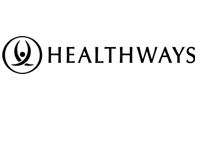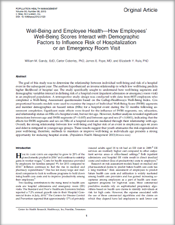Resource:
How Employees’ Well-Being Scores Interact with Demographic Factors to Influence Risk
This study specifically sought to understand how well-being segments and demographic variables interact in defining the risk of a hospital event in an employed population.
Abstract
The goal of this study was to determine the relationship between individual well-being and risk of a hospital event in the subsequent year. The authors hypothesized an inverse relationship in which low well-being predicts higher likelihood of hospital use. The study specifically sought to understand how well-being segments and demographic variables interact in defining risk of a hospital event (inpatient admission or emergency room visit) in an employed population. A retrospective study design was conducted with data from 8835 employees who completed a Well-Being Assessment questionnaire based on the Gallup-Healthways Well-Being Index. Cox proportional hazards models were used to examine the impact of Individual Well-Being Score (IWBS) segments and member demographics on hazard ratios (HRs) for a hospital event during the 12 months following assessment completion. Significant main effects were found for the influence of IWBS segments, sex, education, and relationship status on HRs of a hospital event, but not for age. However, further analysis revealed significant interactions between age and IWBS segments (P = 0.005) and between age and sex (P < 0.0001), indicating that the effects for IWBS segments and sex on HRs of a hospital event are mediated through their relationship with age. Overall, the strong relationship between low well-being and higher risk of an event in employees ages 44 years and older is mitigated in younger age groups. These results suggest that youth attenuates the risk engendered in poor well-being; therefore, methods to maintain or improve well-being as individuals age presents a strong opportunity for reducing hospital events. (Population Health Management 2013;16:xxx–xxx)

